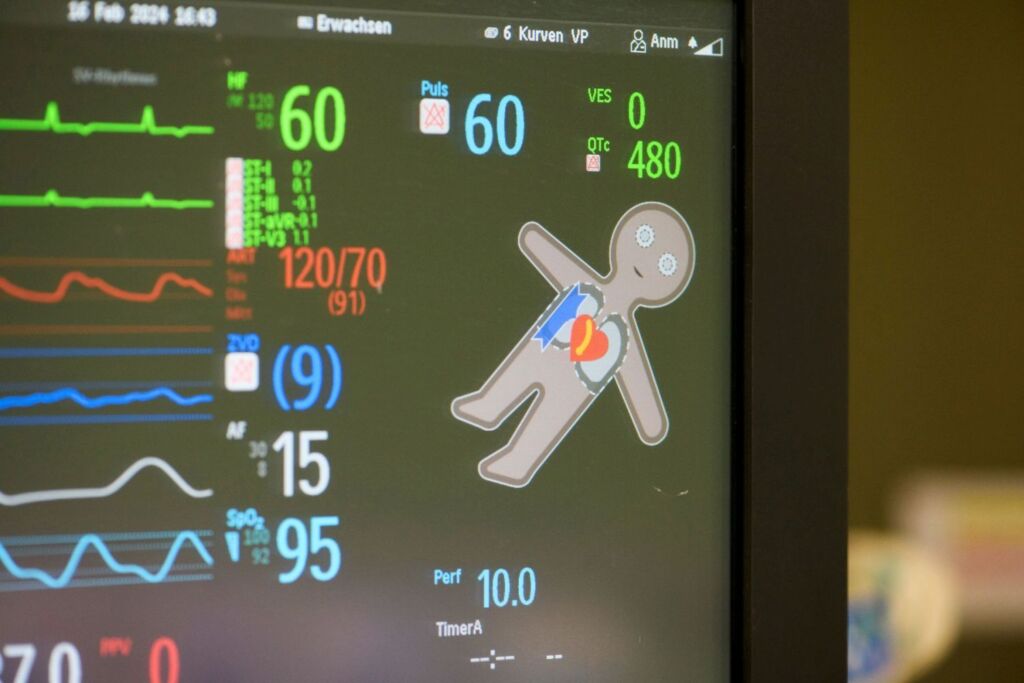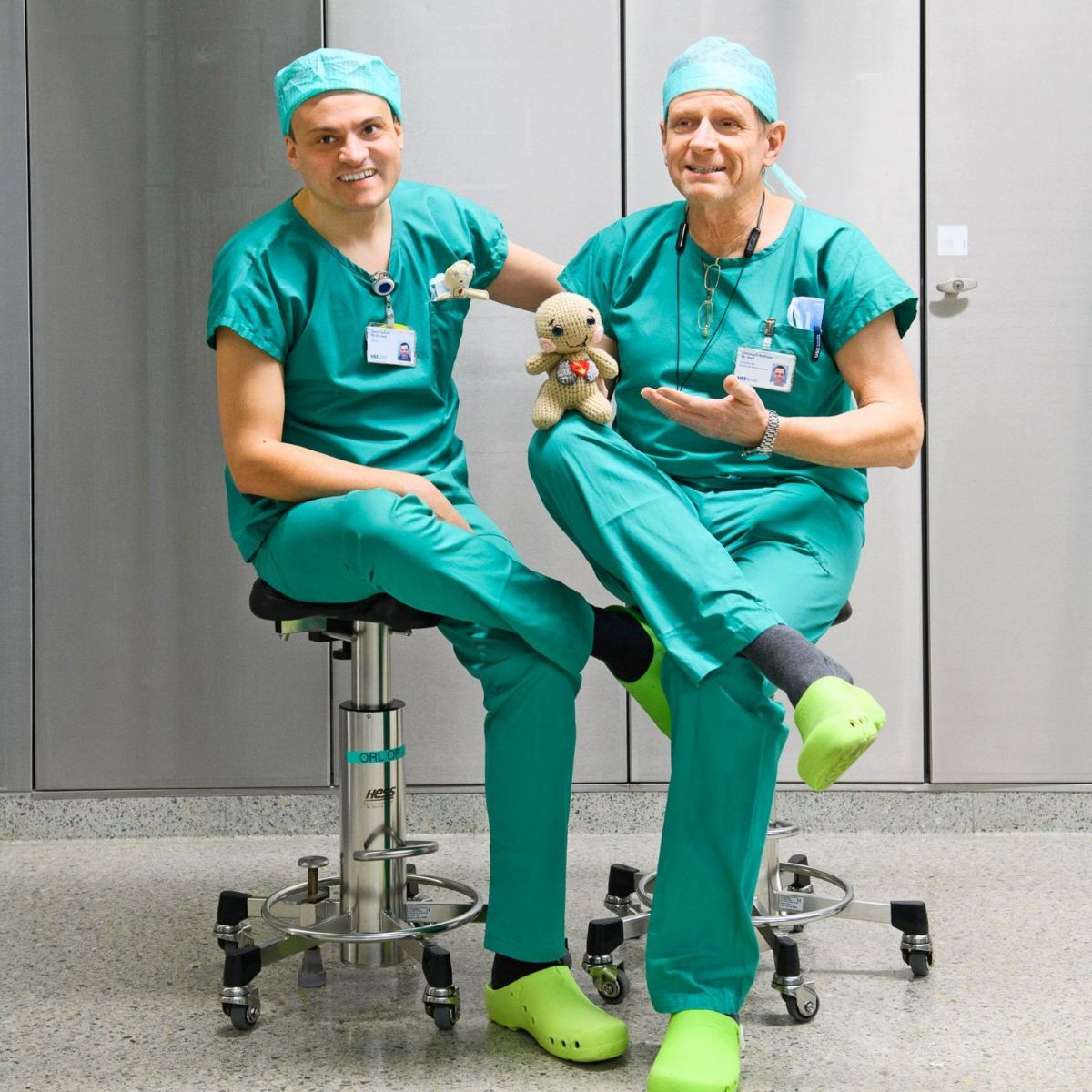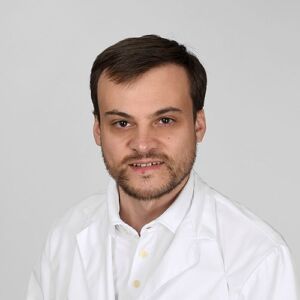The resemblance to the gingerbread man cannot be denied. It is the "digital twin" of every person undergoing surgery at the USZ and effectively increases patient safety: the Visual Patient.
The idea came to him during his great passion: flying. “On the plane, I can view my flight environment on monitors in a simple display. So I thought: why do I have to constantly look at and analyze lots of individual curves, figures and graphs in the operating theatre? “, says the inventor of the Visual Patient, David Tscholl. Over ten years ago, the anesthesiologist shared his thoughts with Christoph Nöthiger, Head Physician at the Institute of Anesthesiology. He is also an enthusiastic pilot and immediately recognized the benefits and potential in the operating theatre.
Working without mistakes
In the midst of complex operations, demanding cases and long days, error-free work is a challenge. The increasing number of parameters on the patient monitors makes it even more difficult to maintain an overview. Whereas a few years ago, three or four parameters were displayed, today there are more than a dozen colorful and moving curves and figures. “We have to work flawlessly. Decisions that we make under time pressure may determine the success of the operation, any complications or even the life and death of the patient,” says Christoph Nöthiger, explaining the problem. The greater the mental and physical strain on employees, the greater the risk of errors.
Of visual beings
This is exactly where the Visual Patient comes in. All important vital functions can be displayed visually on the animated avatar: Body temperature, heart rate, blood pressure or oxygen saturation, for example. “The most important part of the Visual Patient is the visual. As visual beings, we perceive visual changes quickly,” explains David Tscholl. This means that critical changes in the patient’s condition can be recognized out of the corner of the eye – without anaesthetists having to constantly focus on many individual figures.
“As visual beings, we perceive visual changes quickly.”
For example, if the body temperature drops, snow crystals appear around the avatar and are easily recognizable. According to Christoph Nöthiger, this increases awareness of the situation enormously: “The simple, animated visual cues make it much easier to assess the situation and the specialists can react more quickly.” The Visual Patient in no way replaces human expertise. The reaction to the warning still comes from the specialists – and this will remain the case for the time being: The Visual Patient only indicates if a value is too high or too low. “Specialist knowledge remains extremely important,” both are certain.

The spirit of innovation at the USZ
Just over five years ago, the two USZ specialists had done enough research on the Visual Patient to be able to work on an initial prototype together with Philips. They are very satisfied with the result. The Visual Patient is neither too detailed nor too simplified. It is gender and skin color neutral. “It also represents all age groups, which was particularly important to us when designing it,” explains David Tscholl. It also radiates calm: A study carried out among pediatric anesthetists has shown that children find the visual patient fascinating and are therefore more relaxed before an operation. According to Christoph Nöthiger, it has also been well received by colleagues in the clinic: “After three months, more than half of those surveyed in a study had already experienced situations in which the Visual Patient had helped.” In addition to the USZ, the Visual Patient is now in use at the University Hospitals of Bonn and Heidelberg and at New York Presbyterian Hospital.
The structures at the USZ and the University of Zurich were crucial for the development of Visual Patient: “The spirit of innovation at the hospital is impressive. This is the only way we can advance medicine and conduct research that serves patient safety and thus directly helps patients,” says David Tscholl.


